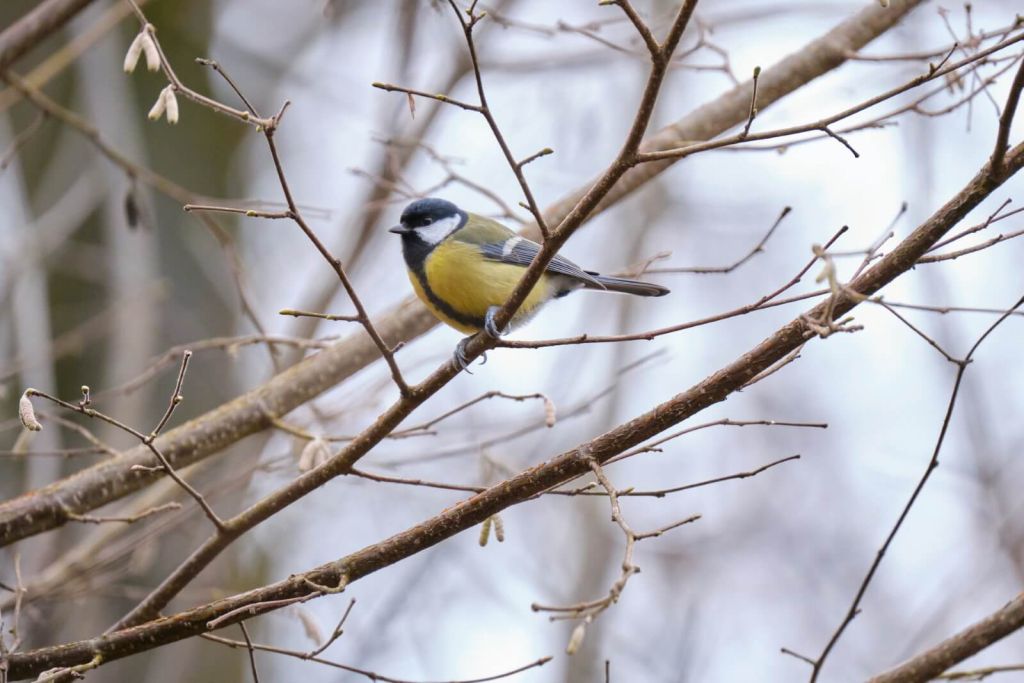Your garden in January

Often the coldest month of the year, January can leave little to be desired when it comes to tackling the garden tasks. But, if one of your resolutions was to be more green-fingered in 2022, then there’s plenty of simple ways to get started this month, from sowing seeds (one you can do from the warmth of your kitchen) to helping the winter wildlife. Read on to find out what to do in your garden this January…
Plant the seed
Just because it's cold and wet outside, doesn't mean you can't get a headstart on your seed sowing - just do it indoors instead. Before you begin, it's worth being aware that the low light levels and central heating can cause issues with the growth of your seedlings, causing 'damping off', where they become diseased. To avoid this, ensure you use a good peat free compost.
When it comes to choosing what to plant, you have plenty of options. For edible produce, chillies usually fare well when planted in January, and now's also a good time to plant basil.
For flowers, take your pick - geraniums, sweet peas, begonias, petunias, delphiniums and dahlias can all be planted from seed now. Use seed compost in your seed trays for optimal growth.
Get moving
With many plants now dormant for the winter, it's a good time to identify any that could benefit from a better spot in the garden, and rehome them.
The process of moving your trees and shrubs takes a bit of planning and groundwork before moving day itself - you’ll want to prepare the new spot, making sure it’s big enough for the roots and future growth. Mix in some good quality compost, too. Then, the day before moving day, set aside some time to water the soil where your plant will be relocated to. Your plants will need a little TLC once they’ve been moved and replanted, too. Adding mulch in the form of bark will keep the weeds at bay and the moisture locked in, but be sure to water regularly, too - even in colder spells for evergreens. (Avoid watering during particularly frosty weather though).
Watch out for wildlife
While many species will be hibernating at this time of year, spare a thought for the birds, who’ll still be visiting your garden, hoping to find food and water.
You can help them out, by ensuring bird baths are ice free and clean, that bird feeders are kept topped up with nuts and seeds, and that your bird boxes are secure and free from debris like last years’ nests.
Helping out the birds is also a great excuse not to cut back too much in your garden - give them somewhere to go, and you’ll save two birds with one stone - they’ll have somewhere to visit in your garden, and you’ll have a genuine excuse for not spending too long outside trying to cut hedgerows and trees back on chilly January days.
Break the mould
You might have purchased your bulbs for next spring well in advance, but you’ll need to make sure they don’t rot, or you won't be left with much to work with when it comes to planting them up next season.
Bulbs and tubers are particularly susceptible so do keep checking them and ensure they’re being stored correctly - ideally in a paper bag or cardboard box, and in a cool, dark room or outbuilding.
Continue Christmas
Christmas might be over for another year, but you can help it to live on, by planting your tree in the garden. If you had a tree with roots in a pot, you’ll want to move this outside as soon as possible post-Christmas, so that it doesn’t become too acclimatised to the warmth of your house, which could hamper its efforts in growing in the colder outdoors.
If you’d like to bring your tree back in again next Christmas, don’t plant it into the ground, and instead grow it in a container, moving to larger ones as needed. Keep it in a sunny spot, and make sure it has a good amount of water - but not so much that it becomes waterlogged.
If you’re not planning to bring the tree back inside again next year, then it can be planted out into the garden. Fir trees like cool, moist areas, away from the heat of the sun (not a problem right now, but might be, come the summer!)
Trees planted out into the garden don’t have their roots restricted by pot size, and therefore can grow pretty tall - in 20 years you could be looking at a tree measuring 20m in height. Something to consider before you get planting!
If you didn’t have a potted Christmas tree, but still want a way to reuse it, consider shredding it for mulch to use around the garden. Or, if you’d like to give the wildlife a helping hand, remove the branches of your tree and tie them together in bundles to make wildlife habitats.
